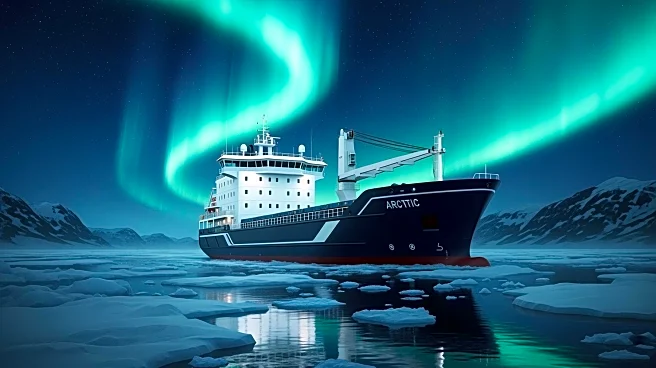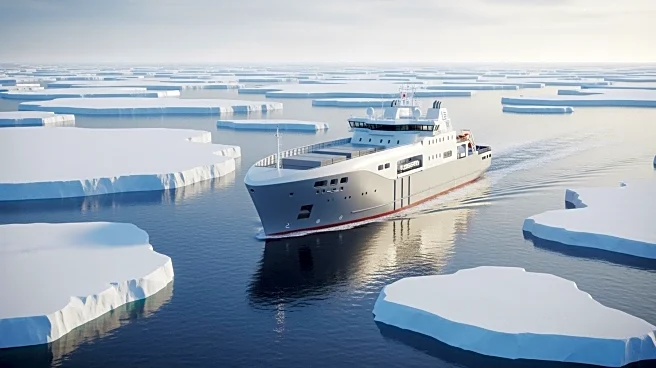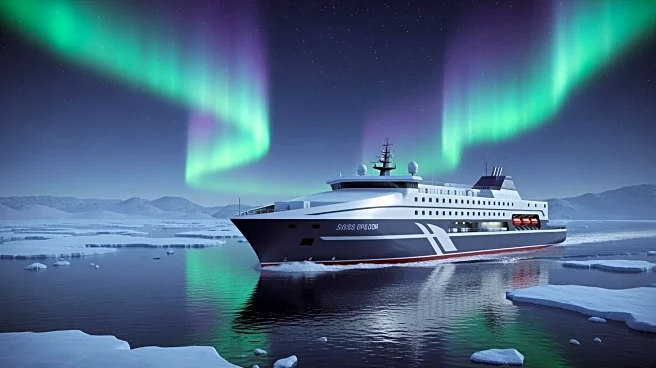What's Happening?
A Chinese container ship, the Istanbul Bridge, has completed a pioneering voyage from China to Europe via the Arctic, marking the first use of the 'Ice Silk Road' for container shipping. The journey, which
took 26 days, was significantly faster than traditional routes through the Suez Canal. This new route, accessible only during certain months due to ice conditions, offers a quicker alternative for transporting high-value goods between China and Europe. The development is part of China's Belt and Road Initiative, aiming to enhance global trade connectivity.
Why It's Important?
The successful navigation of the Arctic route by the Istanbul Bridge highlights the potential for new shipping lanes as climate change impacts global sea ice patterns. This route could revolutionize international trade by reducing transit times and costs, particularly for sensitive cargo. The strategic implications are significant, as the Arctic becomes a focal point in geopolitical and economic discussions. The route's development may alter global shipping dynamics, offering new opportunities for trade and impacting existing maritime corridors.
What's Next?
As the Arctic route gains traction, it may become a regular option for shipping companies, particularly for transporting high-tech goods. The ongoing reduction in ice coverage could lead to increased accessibility and further integration into global trade networks. This development may also intensify geopolitical interest in the Arctic, with countries like China and Russia expanding their presence in the region.
Beyond the Headlines
The Arctic's emerging role in global trade underscores the environmental and strategic shifts driven by climate change. As ice coverage diminishes, the region's importance in international relations and commerce is likely to grow, influencing policy decisions and economic strategies worldwide.











